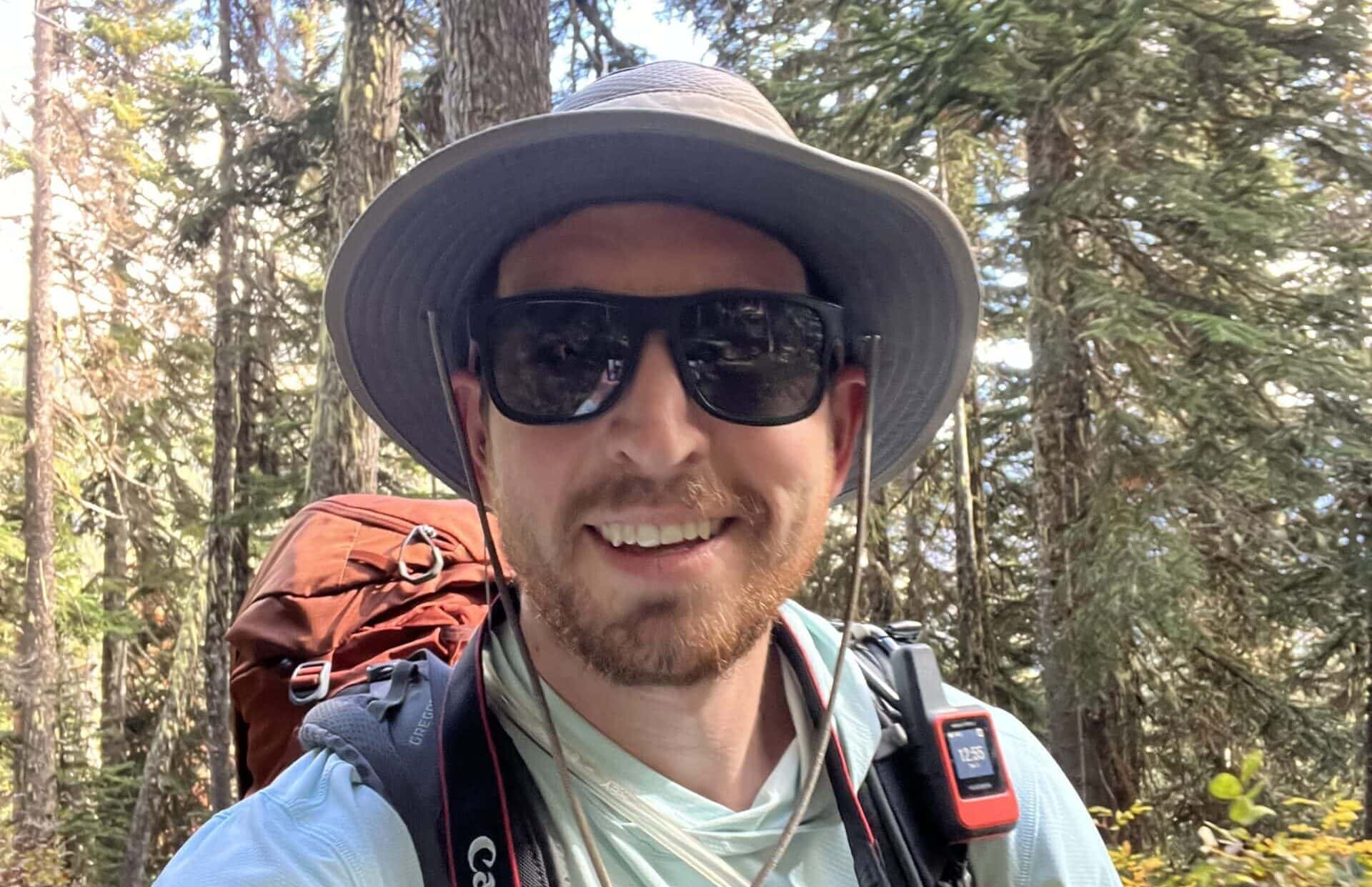Guide To Beautiful Point Lobos State Natural Reserve In California
Point Lobos State Natural Reserve, charmingly called the ‘Crown Jewel of the California State Park System,’ sits along the scenic coast of California. Just outside of Monterey, it’s a breathtakingly beautiful destination for nature enthusiasts, photographers, and adventurers.
Famous for its dramatic cliffs, pristine beaches, and abundant wildlife, this protected area offers an unparalleled opportunity to explore the natural wonders of the Pacific Ocean.
Throughout the article on Point Lobos, we’ll dive into everything you need to know about visiting and show off some photos from my trip here.
Visiting Point Lobos State Natural Reserve in California
1 Minute Guide to the Crown Jewel of the California State Park System
- What are the Reserve Hours? 8am – 5pm
- How long do I need to spend here? You should aim to spend 2-5 hours here.
- How much does it cost? $10 per car
- How far from Monterey? 15 minutes
- Can I bring a dog? No dogs or pets are allowed at Point Lobos
- Check here for the latest conditions.

Detailed Visitation Guide to Point Lobos State Natural Reserve
Point Lobos Loop Trail
The Point Lobos Loop Trail is a gateway to the reserve’s diverse landscapes, winding through lush meadows, dense forests of Monterey pines and cypresses, and along the dramatic coastline.
This accessible path welcomes hikers of all abilities to soak in the stunning vistas and the peaceful ambiance that define Point Lobos, making it a must-visit for anyone seeking to connect with nature.
Total hike distance: 6.5 miles, moderate

Cyprus Grove Trail
For those intrigued by the rare and picturesque, the Cypress Grove Trail offers an intimate look at one of the world’s only two naturally occurring Monterey cypress groves.
This enchanting loop, where the wind-sculpted cypress trees stand against the Pacific’s vast expanse, is a highlight for many, creating a serene and almost mystical experience for walkers.
Total hike distance: 1-2 miles depending on route, easy

Sea Lion Point
Sea Lion Point epitomizes the lively marine environment that the California coast is known for. The area is alive with the sounds of sea lions, which can be seen lounging on the rocks or playfully navigating the waters.
This spot provides an exceptional opportunity for wildlife observation and photography, capturing the essence of Point Lobos’ marine biodiversity.
If you have a camera, aim to have at least a 400mm lense. The below were shot at 600mm.


Whalers Cove
It’s a serene spot for photography, kayaking, and scuba diving, celebrated for its crystal-clear waters and abundant marine life. A small cabin museum at the cove’s edge tells the tale of its whaling past, providing a window into the lives of those who once harvested the sea.
The calm and historically rich environment of Whalers Cove offers a unique blend of natural beauty and historical narrative, appealing to those drawn to the quieter, reflective aspects of Point Lobos.
It’s the first significant area you reach after entering the park.
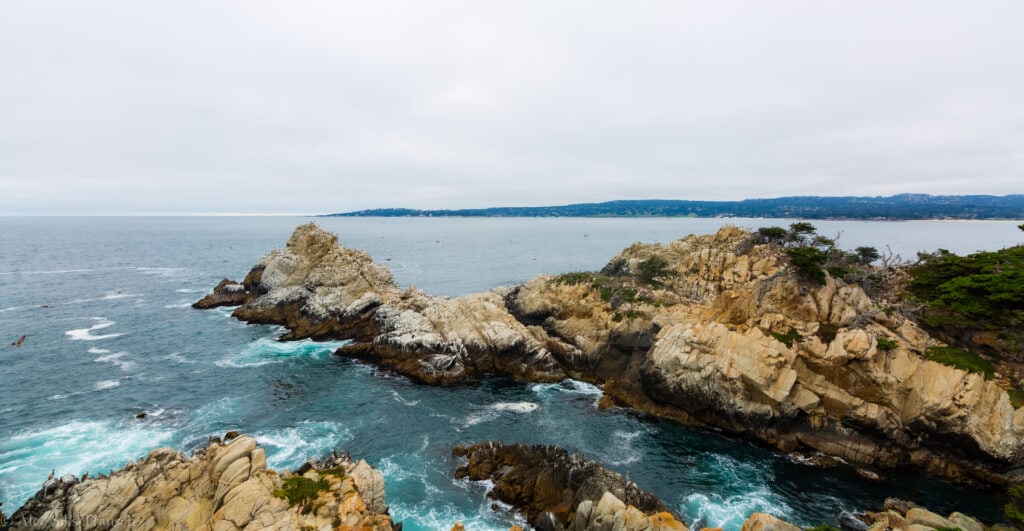
China Cove and Bird Island
China Cove and Bird Island create a vivid tableau of natural beauty and wildlife activity. With its stunning turquoise waters and sheltered sandy beach, China Cove offers a peaceful retreat, while nearby Bird Island buzzes with the sounds of seabirds.
The island is a crucial breeding ground for cormorants and gulls, transforming into a lively avian nursery during the breeding season. This juxtaposition of China Cove’s serene beauty against Bird Island’s vibrant wildlife showcases the diverse ecosystems preserved within Point Lobos.

Go Scuba Diving or Snorkeling
This niche is much smaller than the top five, but you can scuba dive and snorkel at Point Lobos. It’s one of the best areas in the country to do it, with 70-foot-high kelp forests and various animals such as sea otters, starfish, harbor seals, and lots of fish!
If this interests you, make a free reservation here.
How I would structure your visit
If you want to hike the entire time, park at the Museum and do a full loop on foot. Or do this:
- Enter Point Lobos
- Go to Whalers Cove and hike around to the various viewpoints
- Check out Whalers Cabin Museum
- Head to Cyprus Grove trailhead and enjoy the hike
- Grab a snack
- Walk out to Sea Lion Point
- Drive down to Bird Island Parking Lot
- Hit the trail and soak in the views
Is Point Lobos worth a visit?
Yes, it is! I hadn’t done much research going in, so I was flying blind when I got there. Without any expectations, I really enjoyed my time at Point Lobos, especially when I got to the Sea Lion viewing area! Furthermore, getting to hike around and see all the views was dazzling.
This is a family-friendly spot that offers a lot of outdoor activities. I highly recommend it and think you’ll like it, too.
How long should I spend here?
I knocked all the main areas out in half a day during my trip. But then again, I visited more on a whim and went briskly through it all. Still, 6 hours should be plenty of time to hike, see, and enjoy the area!
When is the best time of year for Point Lobos?
You can visit this portion of the California coast at any time of the year. Yes, winter will be much chillier, but it is still a California winter. That being said, spring through fall will be idyllic here. Just note that you have a lot of fog during the summer as the warm inland valley draws moisture in.
If it is foggy, don’t expect the sun until mid-day.

Where is Point Lobos Located
Point Lobos is located 15 minutes south of Monterey on Highway 1. It sits between Carmel Highland and Carmel-By-Th-Sea. Various people will have opinions, but I consider it to be the northern tip of Big Sur.
Thankfully, it is super accessible, and if you’re in the area, you might as well stop by!
What are the hours of Point Lobos, and how much does it cost?
They’re somewhat strict when it comes to operating the gates here. The Day Use Area is open from 8am-5pm, with the last car allowed in at 4:30pm.
As for costs, it is $10 per vehicle per day, with seniors getting a $1 discount.
Additional price points are as follows:
- Disabled (with Discount Pass) $5.00
- CA Explorer Annual Pass $195.00
- Golden Poppy Annual Pass $125.00
- Point Lobos Brochure/Map $2.00
- Bus (10-24 passengers) $50.00 PERMIT REQUIRED
- Bus (25+ passengers) $100.00 PERMIT REQUIRED
Leave No Trace, and Do Not Collect Anything
It is against California law to collect or remove any shells, rocks, wood, plants, animals, or anything else within the Point Lobos area. When you’re here, treat it with respect and make it just as enjoyable for future visitors as it was for you.
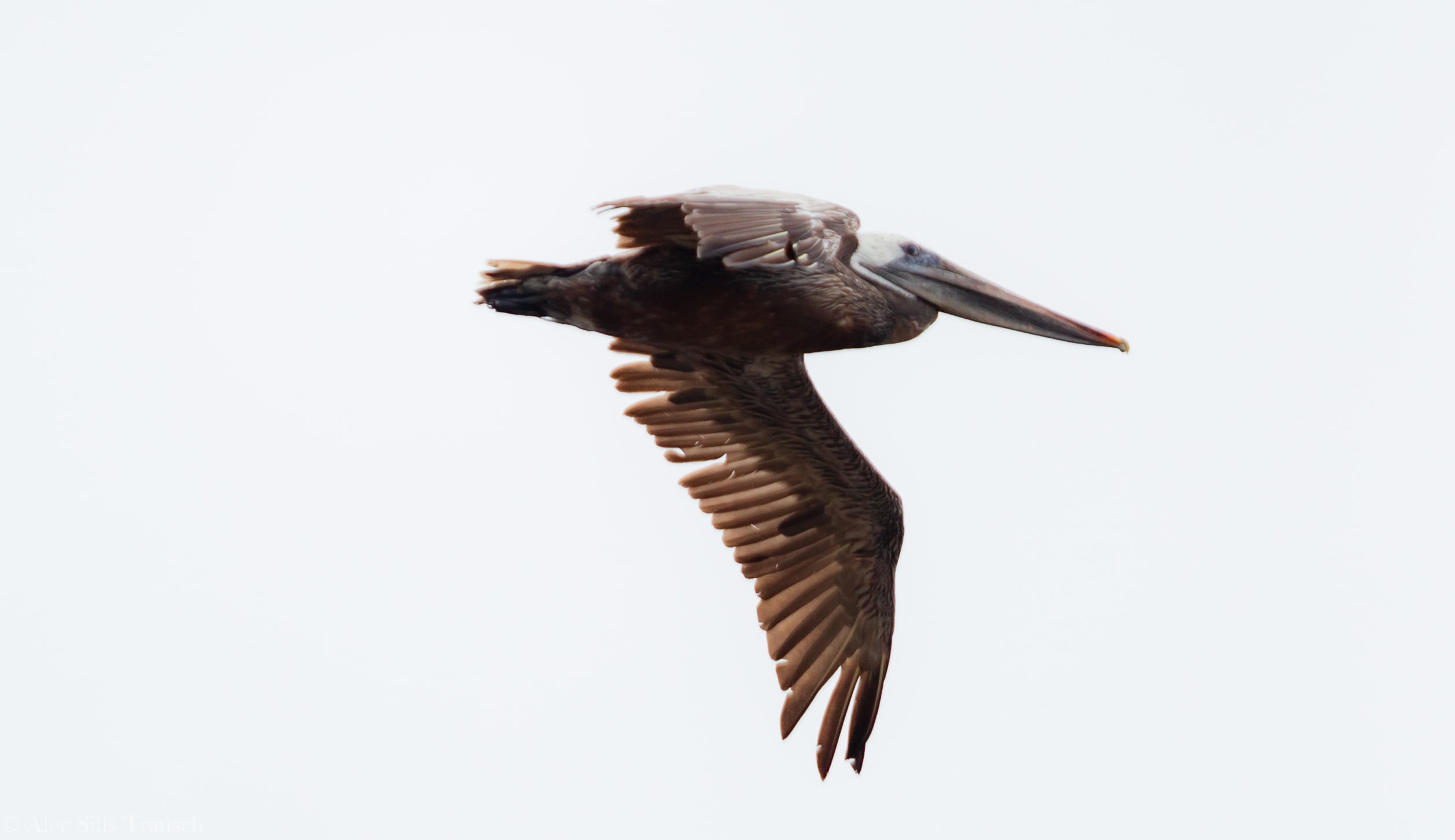
Monterey Bay National Marine Sanctuary
The Monterey Bay National Marine Sanctuary, one of the country’s most magnificent marine protected areas, provides unparalleled opportunities for observing wildlife.
Dubbed the “Serengeti of the Sea,” it extends from San Francisco to Cambria along the central coast, encompassing unspoiled beaches, sparkling tide pools, dense kelp forests, deep canyons, and a vibrant offshore seamount bustling with creatures ranging from minuscule shrimp to colossal blue whales.
Through the National Marine Sanctuary System, efforts are dedicated to environmental conservation, stewardship, and marine research.
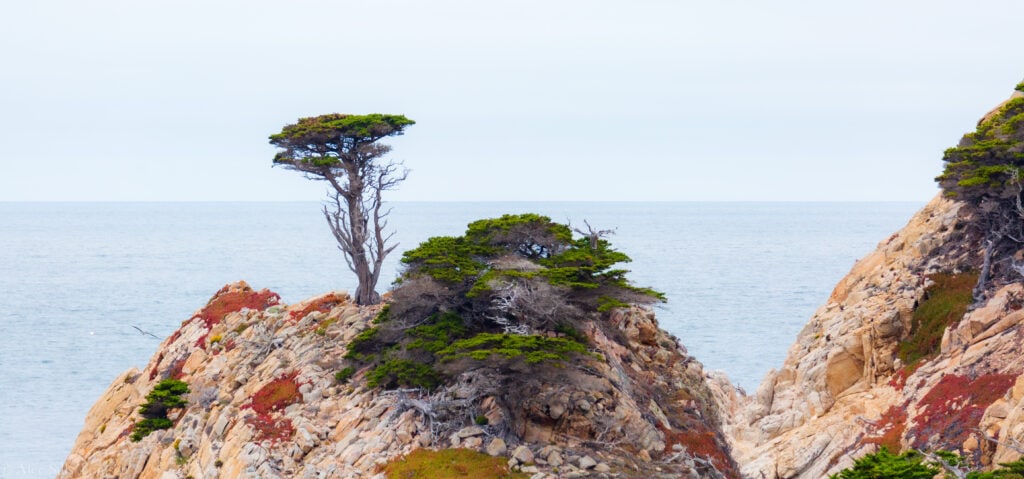
What is the history of Point Lobos State Natural Reserve?
Point Lobos State Natural Reserve, located near Carmel-by-the-Sea, California, boasts a rich history marked by its pre-European settlement by the Ohlone people, European exploration in the 16th century, and subsequent use for whaling, mining, and agriculture.
“Originally known to indigenous people as “Isxhenta,” Point Lobos was considered a sacred place to be cherished and nourished,” according to the state park’s website. “Today, people come from all over the world to become inspired by this unique place.”
The name “Point Lobos” comes from the Spanish “lobos marinos” or “sea lions,” reflecting the area’s abundant marine life. By the 19th century, the exploitation of its resources led to a push for preservation, with significant efforts in the early 20th century to protect its unique beauty and ecological significance from industrial development.
Officially designated as a state reserve in 1933, this natural sanctuary has since been a haven for nature enthusiasts, offering trails, scenic views, marine protected areas for diving, and wildlife observation. Managed by the California Department of Parks and Recreation, it exemplifies the balance between enjoying natural beauty and conserving biodiversity and historical sites.
Today, Point Lobos stands as a testament to the importance of conservation, serving as a model for protecting natural and cultural heritage for future generations.
Where to stay near Point Lobos
Monterey, Pebble Beach, and Carmel are the three best places to stay in the area. Pebble Beach and Carmel will be pricier but more luxurious. Monterey will be a little more economical.
Budget Lodging:
Residence Inn | Pacific Inn | Travelodge by Wyndham
Mid-Tier Lodging:
Normandy Inn | Wayside Inn | Carmel Mission Inn | Portola Hotel and Spa
Luxury Lodging:
Villa Mara Carmel | Seven Gables Inn | La Playa Hotel | Sanctuary Beach Resort
Camping Option:
Monterey Veterans Memorial Park has campsites available if you’re looking to camp. It was first come, first serve, and camping is limited to three consecutive days. It’s not cheap, though, at $47 per vehicle.
What else is there to do nearby in Monterey and California Coast?
- Enjoy 17-Mile Drive through Pebble Beach and the coastline
- Check out the fantastic Monterey Aquarium
- Play Golf
- Drive down into Big Sur and Garrapata State Park
- Head inland to Pinnacles National Park and hike the High Peaks Trail
- Drive up to Santa Cruz to Shark Fin Cove or Henry Cowell Redwoods State Park
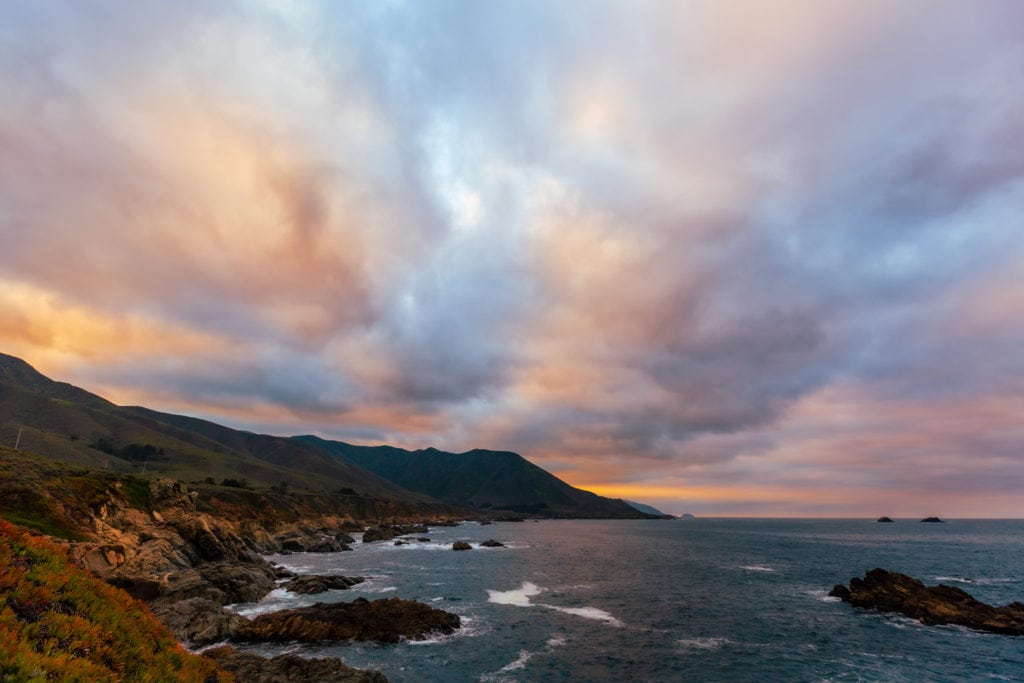
FAQ: Point Lobos
Will I have cell service?
Yes, you should have cell service. You’re not too far from Monterey, and you can also see Pebble Beach Golf Course across the bay from Whalers Cove. So I think you’ll be good!
Can I fly my drone here?
You are not allowed to fly any drones within the area. Please leave it in your car.
Can I bring any dogs or pets?
Dogs and pets are not allowed anywhere within the Point Lobos State Natural Reserve boundaries nor can they be left in the car.
Wrapping Up Visiting Point Lobos State Natural Reserve
Point Lobos State Natural Reserve offers visitors a truly unique and awe-inspiring experience. From its breathtaking coastal views to its diverse array of wildlife and plant species, this natural reserve showcases the beauty and wonder of nature in all its glory.
Whether you are an avid hiker, wildlife enthusiast, or simply seeking solace in the tranquility of nature, Point Lobos has something for everyone. Its well-maintained trails, informative visitor center, and knowledgeable staff ensure visitors have a safe and educational experience while exploring this remarkable reserve.
So, if you find yourself longing for a rejuvenating escape into nature’s embrace, do not hesitate to plan a visit – it’s a true haven for anyone seeking calm from the hustle and bustle of everyday life.
Until next time, adventurers, take care and be safe.
Follow on social media: TikTok || Instagram || Facebook || Newsletter

